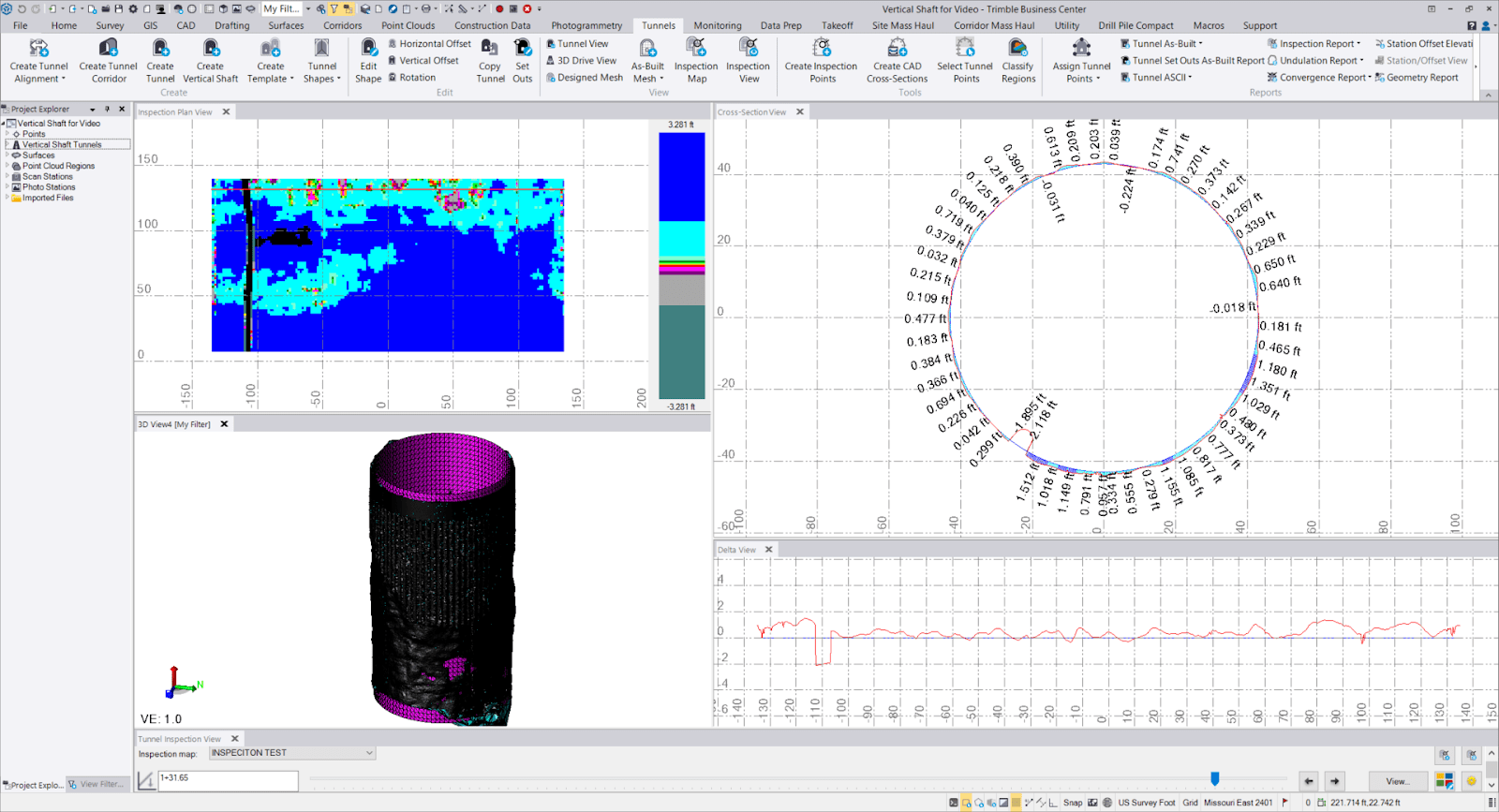Unlocking new depths: software enhancements for underground tunnel & mining surveyors
Underground surveying requires tedious measurement best practices, intense attention to detail and perseverance in tough environments. Surveyors need to rely on their technology to be reliable and efficient so they can get the job done safely and quickly.
The Trimble tunneling software combination of Trimble® Business Center (TBC) and Trimble Access provides tools that make delivery of underground survey deliverables faster and simpler. The recent releases of these software packages have introduced new workflows and tools to enhance underground surveying.
Delivering survey quality results for every step of the tunnel project
Many tunneling and underground mining projects need a way to get to the tunnel or mine heading. This is often done by creating a vertical entrance shaft that allows construction and mining to start — at the right elevation. For surveyors, vertical shafts, like many structures, require stake out and measurement throughout the process to ensure that it is built to spec and lasts for the life of the project.
In TBC v2024.00, a vertical shaft design and as-built workflow has been introduced. Utilizing the same data preparation and reporting tools for horizontal tunnels, users can now report on vertical shafts for construction conformance, inspection and more.

The vertical shaft function in TBC allows you to prepare a 3D model of the design and compare survey as-built data for construction quality control and inspection
Streamlining data capture-to-delivery utilizing AI
More data than ever is being captured on tunnel projects, and geospatial data is no exception. As 3D laser scanners become more efficient and easier to incorporate into workflows, there is a growing need to efficiently create accurate deliverables from the data. This can be a daunting effort due to the traditional manual processing that is required to clean and prepare a point cloud for delivery.
Tunnel point cloud cleanup is now much faster with the introduction of an advanced tunnel point cloud classification in TBC based on a deep learning (a type of artificial intelligence) model. Not only does the function remove noise from the point cloud, such as people and machinery, but it also segments out key features including shotcrete versus rock surfaces, rockbolt locations, rebar mesh, tunnel floor and more.

The deep learning point cloud classification in TBC reduces manual data processing time and provides greater detail into key features captured including shotcrete versus rock surface, rock bolt locations, rebar mesh and unwanted data such as machinery
Greater insights into quality, leveraging geospatial data
Tunnel surveyors provide guidance to construction crews to ensure the tunnel is built in the right direction and shape using geospatial measurements. There are many circumstances where a 3D coordinate alone is not enough to provide insights into the construction process. Field software needs to perform calculations and reports that leverage the geospatial data for tunnel-specific features.
Trimble Access v2024.00 introduces a slope stationing measurement called "distance along alignment," which provides the slope distance along the alignment in addition to the existing 2D-based station. This enables surveyors working on steep gradients to more accurately gauge tunnel construction progress.
Trimble Access Tunnels software has been enhanced to include a slope distance measurement which is useful when working on tunnel and underground mine projects with steep gradients.
More sustainable tunnel construction
The latest updates to the Trimble tunneling portfolio are set to transform the tunnel construction and surveying landscape. The new vertical shaft design and reporting workflow, deep learning-based point cloud classification, and enhanced measurement functions in field software not only promise to improve project outcomes, but also pave the way for more sustainable and efficient construction practices.